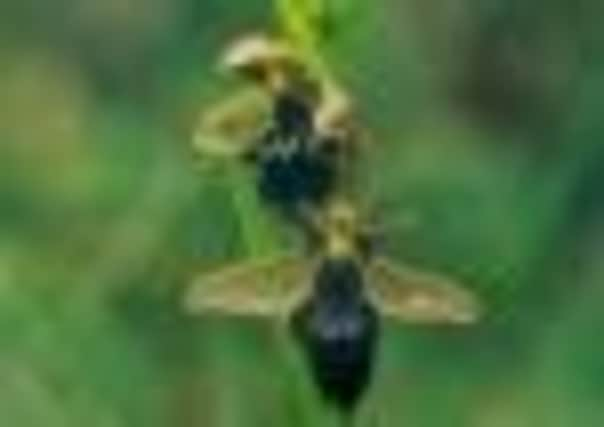Thirty years ago I found triplet fly orchids


Here is a picture of it taken five years ago by Duncan Fletcher, who has been tracking down wild orchids for years and is quite used to seeing many of the 26 or so wild orchids and their variants which occur in Sussex.
This one was, however, new to him.
Technically it is described as a cross between 278.2 and 278.5, the fly orchid and the bee orchid, so it is a hybrid.
Advertisement
Hide AdAdvertisement
Hide AdI shall not say exactly where it has been found growing because there are those who would wish to dig it up and add to their collections or sell it on.
However, obviously it grows on the chalk downs and like many of its kind grows well on newly opened chalk such as the scree around quarries.
If you know your Sussex orchids, you will see several characteristics of both fly and bee here, all muddled up.
For a start its three long sepals are pink, which is what the bee orchid has.
The fly orchid has green sepals.
Advertisement
Hide AdAdvertisement
Hide AdThese are the bits that look a bit like an aeroplane propeller.
Then there is the question of the lip. This is the big main petal hanging down and in this case is a lovely deep velvety purple with a piece of pale blue across the top.
The top of this lip, or labellum as botanists call it, has a rather sinister face on it with two pale blue eyes.
All orchids in Sussex have lips and some of them have most strange designs, cryptic patterns which often do resemble tiny people.
Advertisement
Hide AdAdvertisement
Hide AdThe lip in this hybrid is mainly fly orchid, but much too fat.
Also, the little velvet trousered man with the sinister eyes has his arms folded behind his back.
On the fly orchid these are held out as though to hug you.
On the top of his head are two yellow spikes.
These are the pollen sacs and they are typical bee orchid pollinia.
The whole flower does have fairly close resemblance to bee orchids found in Southern Europe, such as Moroccan ophrys and the Sombre bee orchid, subsp.iricolour.
Advertisement
Hide AdAdvertisement
Hide AdYou could almost say it is like Bertoloni’s bee orchid which is found in the Balearics.
Who knows what global warming will bring us next, if that is where this particular puzzle lies.
Wild orchids do throw up oddities though which soon phase out.
I remember thirty years ago finding Siamese triplet fly orchids at Chilgrove. Three flowers joined at the lip and there were several of them.
Advertisement
Hide AdAdvertisement
Hide AdMy opening remarks mention this as possibly being the rarest flower in Sussex.
Others suggest this prize should go to the lizard orchid, which has all but vanished, once being well known at Goodwood Park 70 years ago but now confined apparently to one or two occasionals near Duncton.
Next week is the moment when the bee/fly flowers, so we’ll keep our eyes peeled.